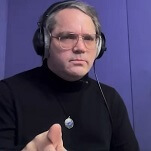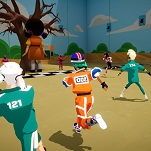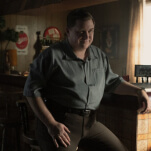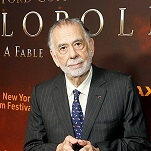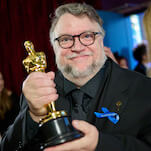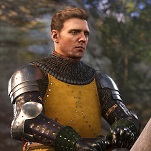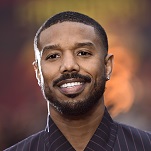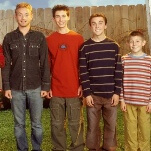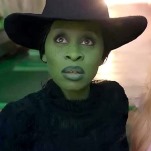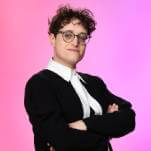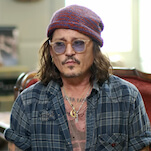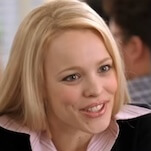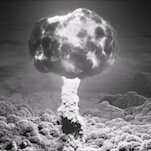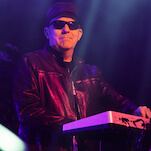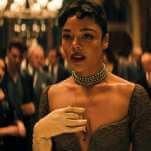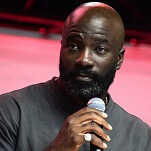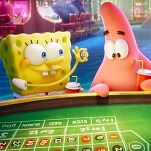Reid Duke travels to Magic: The Gathering tournaments 40 weekends each year. “It’s a lot,” he said. “I enjoy traveling, I enjoy going to new places, but sometimes I wish it was 20 [weekends].”
Duke started playing Magic at age 5, but in college, he was faced with a choice: Set the game aside and focus on his studies, or get even more invested. He doubled down. In 2010, Duke competed in his first Pro Tour, a tournament series open only to the game’s top competitors, and by 2012, Magic became his full-time job. Duke pays his bills in part with prize money and in part by writing about the game: He writes weekly articles for Wizards Of The Coast (the Magic publisher) and for Channel Fireball, a Magic retailer and hub for in-depth strategy guides. The competition and writing careers go hand in hand, as fans prefer to get their deck-building advice from players who have been successful at recent tournaments. While Duke says his prose skills have made him popular, he acknowledges the power of name recognition in the community.
The last weekend of May, Duke was one of 11,000 people who traveled to the Las Vegas Convention Center to play in the Modern Masters Grand Prix, a tournament where players built decks using the freshly released Modern Masters 2015 Edition set of cards for a shot at thousands of dollars in prizes. Also up for grabs was the chance to compete in the Pro Tour Magic Origins tournament, happening July 31 to August 2, where $250,000 in prizes will be on the line.
But the tournament was far from the Las Vegas Grand Prix’s only draw. Fans waited in long lines in Artist Alley, where 31 illustrators were signing cards and drawing pictures. Cosplayers dressed as characters from Magic posed for pictures. Multiple side tournaments were set up for a variety of game formats, appealing to both the more casual players not competing in the main event and those who were eliminated early and looking for another shot at victory. Game stores set up booths to buy, sell, and trade Magic cards, along with comic books and cards for other games. Images of art from popular cards such as Tarmogoyf and Vendilion Clique hung from the ceiling, providing landmarks for people trying to meet up in the massive convention hall. And there were four weddings.
Since Magic was first released, the vast majority of tournaments have been casual affairs held at local comic book and gaming stores, but massive events like the Grand Prix and Pro Tour tournaments have become an essential part of Wizards Of The Coast’s strategy for the collectible card game.
“It built up over time,” said Helene Bergeot, director of organized play for Magic: The Gathering. “Magic is by nature a competitive game. Very quickly after the game was launched, we saw players spontaneously running tournaments. We embraced that. We thought, ‘If players are interested in competition, how can we make those competitions interesting?’”
Modern Masters 2015 Edition is the second version of a set devoted to reprinting favorite cards from earlier editions. The first Modern Masters, released in June 2013, also launched with a Las Vegas Grand Prix that drew a record-breaking 4,000 competitors. This year’s was so big it was technically two Grand Prix events with separate prize pools. Wizards Of The Coast runs 54 of these massive tournaments around the world each year, and top players attend as many as possible.
In a typical week, Duke plays in tournaments on Saturday and Sunday, travels Friday and Monday, and uses Tuesday through Thursday to do laundry, pay bills, plan his next trip, and practice. He tries to play as much Magic as he can on his days off, spending an average of 18 hours a week on the game outside of tournaments. Four to five times a year, he gears up for big competitions by attending a boot camp where he spends 10 days secluded in a house with a dozen other players from around the world.
Duke is Platinum level in Magic’s Pro Tour Players Club, which means that Wizards Of The Coast pays for him to travel to tournaments and even gives him an appearance fee that ranges from $250 to $3,000, depending on the type of tournament. But that status must be earned every year, and Duke needed a strong finish in Las Vegas—or one of the four other major tournaments being held before August 2—in order to keep that perk.
“It’s really all about offering the best level of competition,” Bergeot said of the Players Club. “We make sure the players who are at the top are encouraged to stay. It’s also a very nice situation for the players who are new to the circuit because they’re looking to those players as role models.”
Top players also have the chance to be among the competitors inducted into the Pro Tour Hall Of Fame each year. Brian Kibler, who was inducted in 2010, has been playing Magic for 20 years, starting before the game had anything like the organized tournament structure it has now. He took a break from the game in college but got back into it when the Hall Of Fame was announced.
“That re-lit my fire,” he said. “I wanted to prove myself worthy of The Hall Of Fame.”
That effort entailed traveling every weekend to attend Grand Prix tournaments and Pro Tour tournaments. “It is exhausting,” Kibler said. “During that period, I was also working full time as a game designer. I was really burnt out at one point. I love playing in tournaments, but it really does feel like a job I’m commuting thousands of miles for.”
But the effort paid off. As a member of the Hall Of Fame, he now is regularly paid to appear at tournaments of all sizes and has his own column and video series at Star City Games. He also works as a developer at Stone Blade Entertainment, creators of Ascension, a popular deck-building card game. But at the Grand Prix, he’s a celebrity. Two people asked him to sign their Magic playmats during our interview, and one of them actually had a photo of Kibler on it.
“Everything I’ve ever done in my adult life is make or play games,” Kibler said. “It basically means I haven’t had an adult life.”
Another star of the event was Christine Sprankle of Lodi, California, who was dressed as the angel Avacyn, the central figure of the 2012 Magic set Avacyn Restored. Sprankle wasn’t competing in the tournament—it’s too hard for her to play in the elaborate costume, she said. She has been cosplaying for 11 years and was inspired to start dressing as Magic characters after she saw a picture of Elspeth Tirel, one of the game’s iconic characters, at one of her first tournaments. She made an Elspeth costume and showed it off at the 2011 Magic World Championships in San Francisco.
“My friend described it as one of the biggest Magic events around us,” she said. “It sounded like a con, so I made a costume.” Sprankle was the only person at the event in full Magic garb, “but the response was so positive,” she said. “I got hooked. To this day I still get asked, ‘Are you that Elspeth chick?’”
While she works for a city-run after-school program, Sprankle travels almost every other week to appear at tournaments and conventions. She typically spends two hours getting into costume and then spends up to eight hours interacting with fans. One of those was Amber Young, a casual player attending her first Grand Prix who plans to cosplay at the San Diego Grand Prix running from August 7 to 9. Women are massively outnumbered in the competitive Magic community, especially at its highest levels, but Young felt more comfortable at the Grand Prix than playing at local stores where “the community can get iffy now and then,” she said.
“I’m not very competitive, but a lot of players are so welcoming,” Young said. “We’re making friends and talking to people.”
Considering how much time serious players are devoting to the game, that social aspect is key. Kibler said that with the exception of his brother, all of the best men at his wedding were people he met playing Magic. Another player, Paul Rietzl, had to get an early copy of the tournament calendar so he could schedule his wedding around it. “I didn’t want to ask people to skip a Pro Tour or Grand Prix,” he said.
A member of the Hall Of Fame class of 2014, Rietzl works as an executive recruiter for his day job and travels to tournaments 13 to 18 times a year. “I do 9 to 5, and then weekend warrior for Magic. I play almost every day. Weekends I only play if there’s a big tournament. That’s time for my fiancée and social life. If I actually thought about how many hours I’ve played, it would be sickening.”
Duke didn’t get the wins he needed to secure his Platinum status in May’s Las Vegas tournament, but he got closer in June with a fourth-place finish at Grand Prix Singapore. He has one last shot at keeping his place in the Pro Tour circuit this weekend in Vancouver. He’s probably practicing right now.
All photos—except for the lounging Brian Kibler playmat—by Wizards Of The Coast
